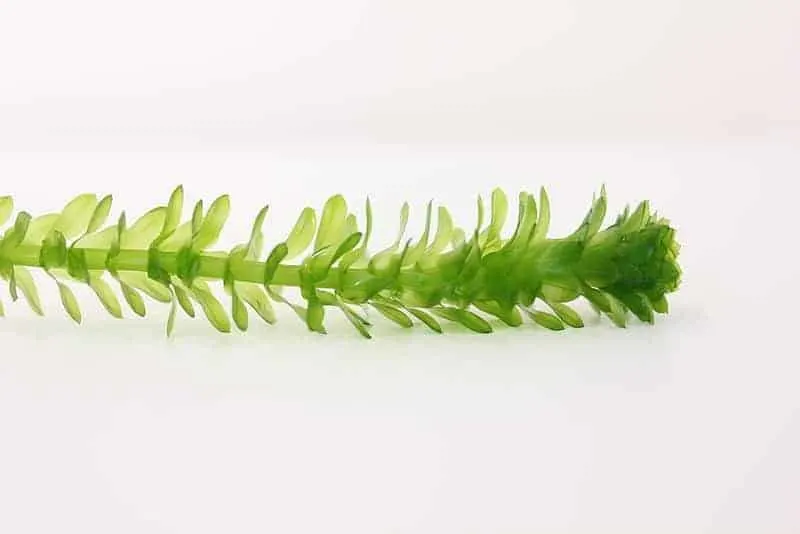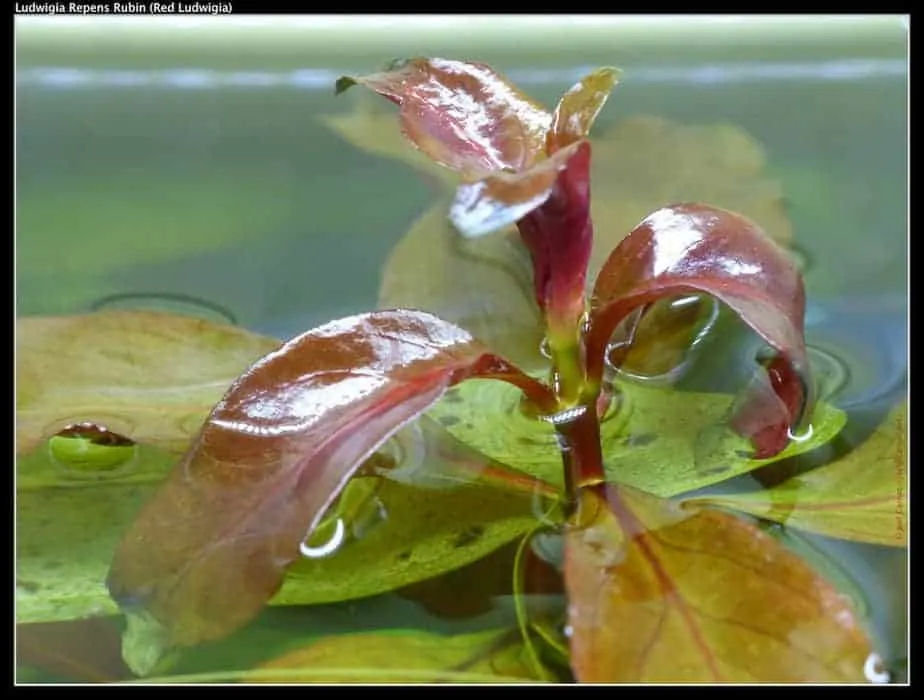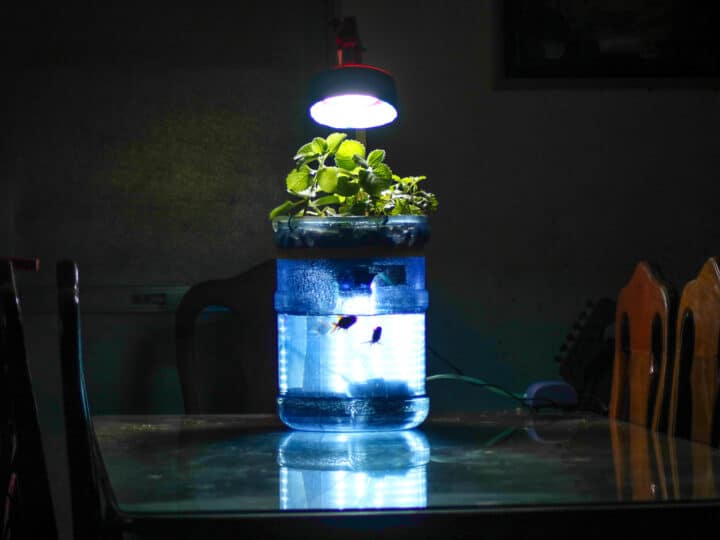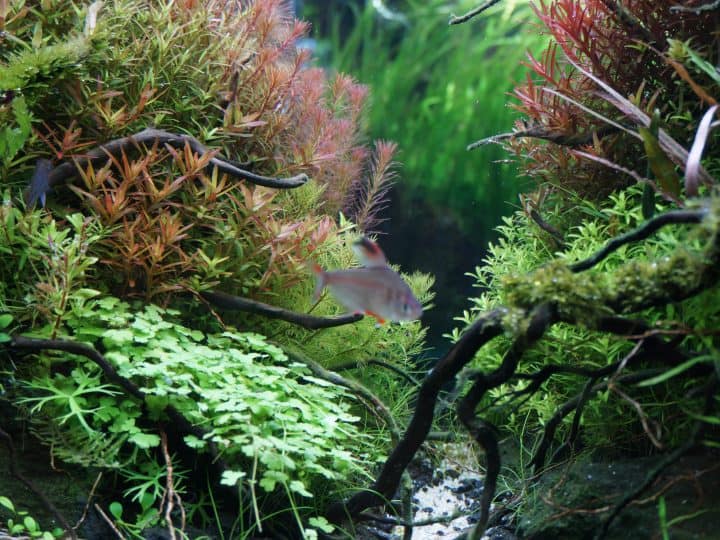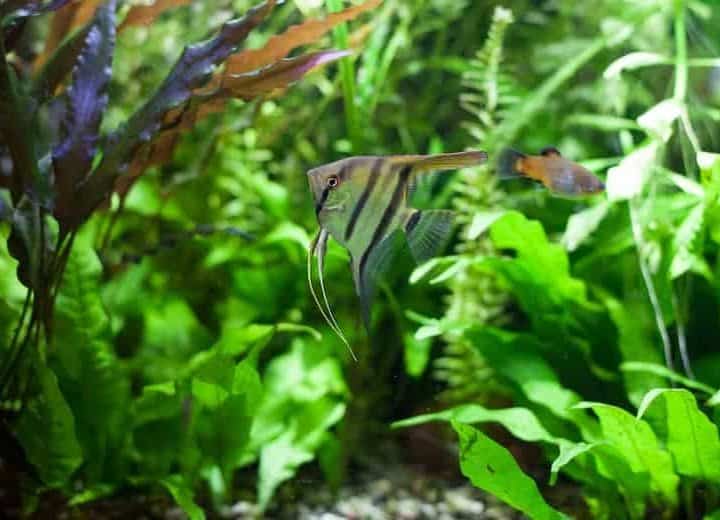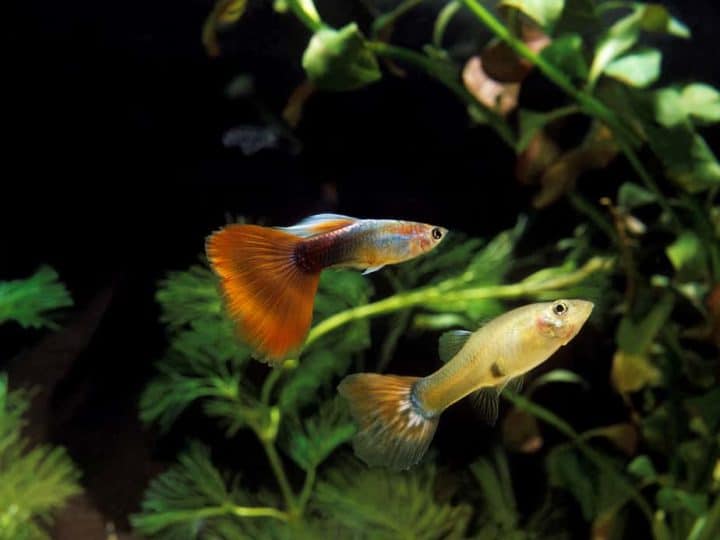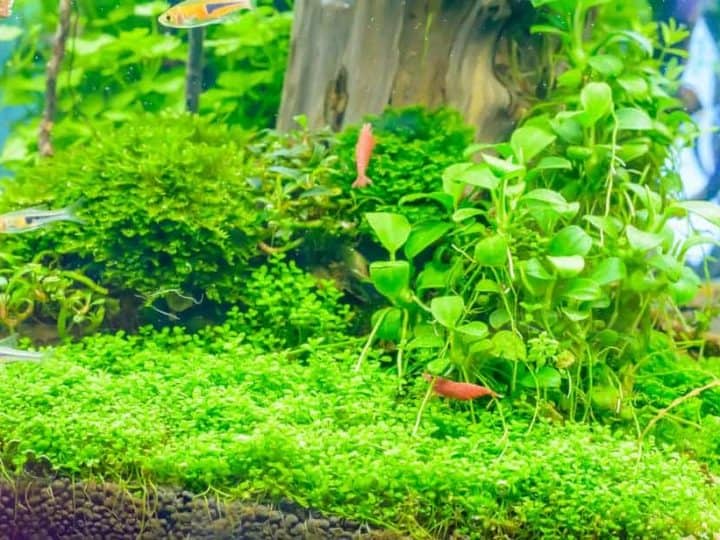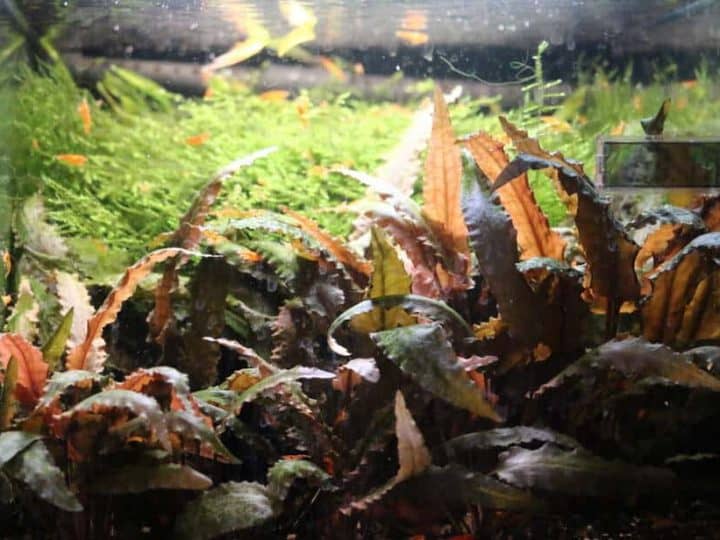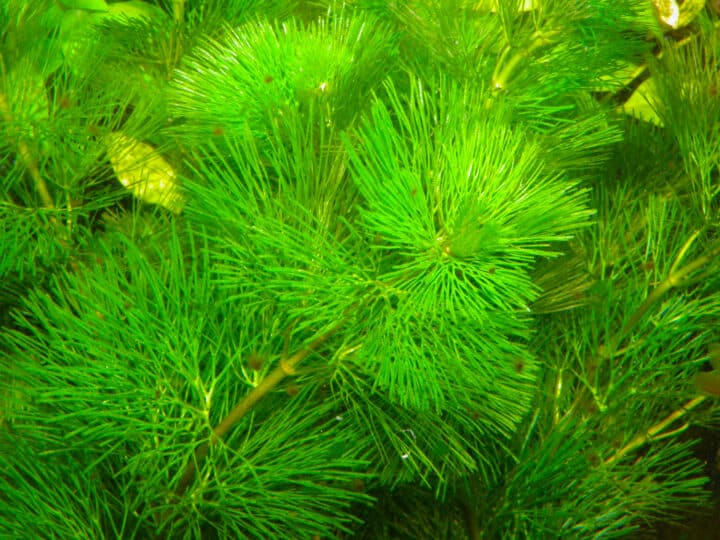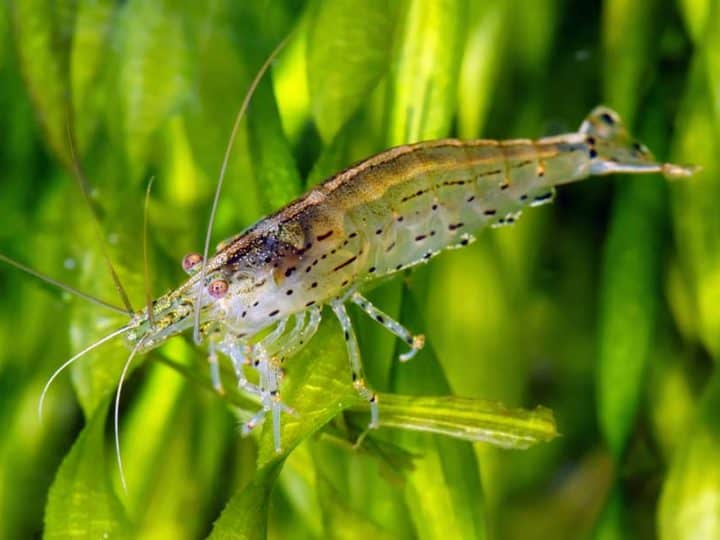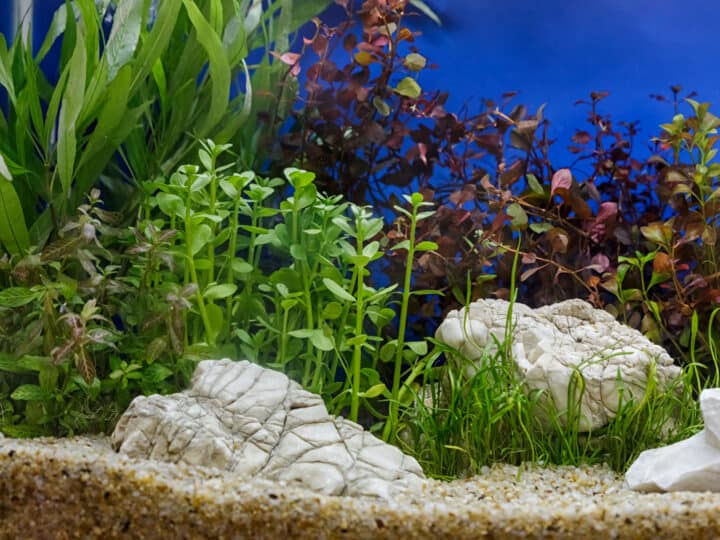One of the biggest benefits of live aquarium plants that grow fast is that they help to clean your tank of contaminants. So, what are 10 aquarium plants that grow fast?
10 aquarium plants that grow fast include water weed, dwarf ambulia, dwarf hygro, hornwort, ludwigia, amazon frogbit, and several others.
Keep reading to find out about all of the best fast-growing aquarium plants that will require weekly trims.
How to Take Care of Fast Growing Plants
Generally speaking, taking care of aquarium plants does not have to be hard. It can be a challenge to find what they need, what they are missing or if there is a surplus. If your current situation is unbalanced, it will often become visible through annoying algae. But what makes fast growing plants different from other plants?
Fast growing plants deplete the nutrients in your water very quickly, rapidly growing at the start only to come to an ugly halt when all the nutrients are gone. You will find yourself in this situation when you’ve been enjoying rapid growth for a week and suddenly see your plants slowly dying off.
To prevent this, you need to make sure that there are enough nutrients in your aquarium at all times. If you’re setting up a new aquarium there will be no nutrients in the water, so you need to start dosing liquid fertilizer immediately. If you’re adding fast growing plants to an established tank, the plants will soak up all the nutrients within a week. After that, or as soon as you see your plants struggling, start adding liquid fertilizer.
Make sure you use a high quality fertilizer like Seachem Flourish, which is the one I would highly recommend. You can order this fertilizer on Amazon here. I really recommend you do add fertilizer to fast growing plants, otherwise it’s going to be the first thing that runs out. It’s worth it!
Besides adding fertilizer, you are going to be spending some time trimming the plants. If you’re providing everything the plant needs it will result in noticeably daily plant growth. Your plants will reach the top of your tank in no time, and you need to trim.
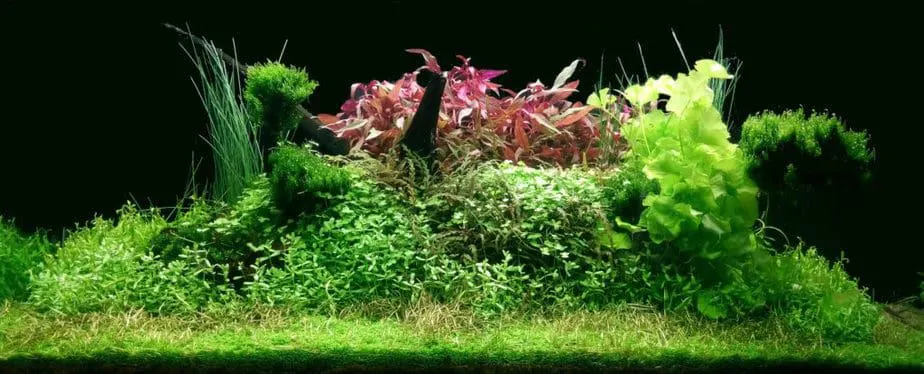
Often you can use the cuttings to propagate the plant, or you can give it to other fish keepers to make them happy. Of course, you can also throw them away.
1. Elodea Densa (waterweed)
Commonly referred to as “waterweed”, this beginner plant got me to trim my aquarium very often. I have found this plant to be one of the easier stem-plants available, and it’s also rather cheap! If you are able to find this plant in a local fish store near you, give it a try. It’s also on my list of easy and forgiving aquatic plants for beginners, which you can find here.
Waterweed needs moderate lighting to stay alive. If the lighting is too low it will turn brown and fall apart, which has also happened to me. Like other plants, it grows fastest with additional CO2 added to the water, but it’s not necessary. I’ve often seen this plant recommended as an “oxygen plant” near the goldfish section, so it might be hidden there.
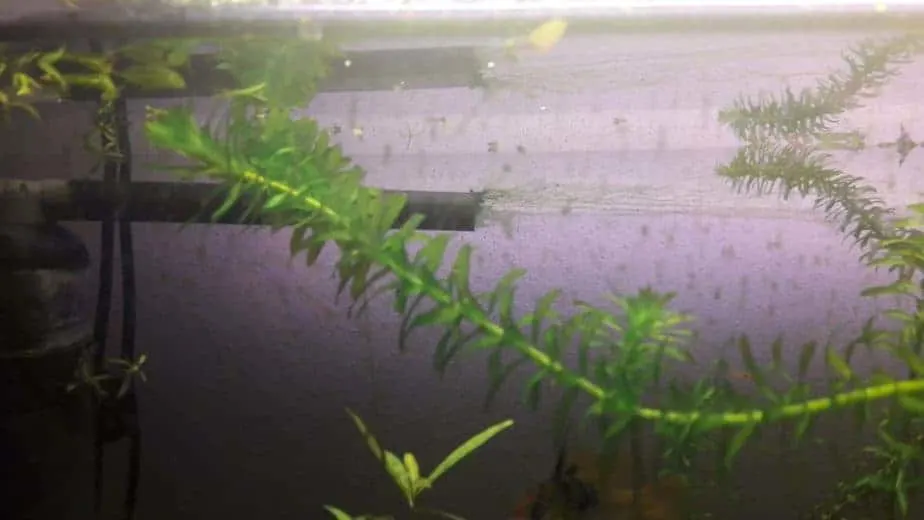
To plant this plant, grab a couple of stems and push them into the substrate together. Make sure you push them down enough so your fish or the current can not pull them out again. If they stay in this way, they will automatically start to grow roots and start to grow. To propagate, trim the plant and stick the loose ends in the soil again.
2. Dwarf Ambulia (Limnophila Sessiliflora)

Second on the list is my favorite stem-plant: Dwarf Ambulia. On the picture it’s the tall green background plant on the left, and as you can tell, regular trimming is required because those new leaves grow very quickly.
I’ve received my first couple of stems from my grandfather and it’s grown in my aquarium ever since. Dwarf Ambulia is a beautiful lush green plant with fine leaves. If the plant is nearing the water surface and gets too much light, the tips of the plant turn red.
When this plant is grown in a balanced aquarium it grows fairly quickly and needs a trim regularly. The plant can easily be propagated by planting the cuttings.
If you’re really going for a beautiful aquarium, instead of throwing away the tips you cut from the plant, pull out the remaining plant and replant the cutting. This way, you will not have distrubed tips. Also, make sure you don’t keep all the stems the same length when you plant them. Instead, plant some smaller cuttings on the side to give the bush a more rounded feel.
3. Dwarf Hygro (Hygrophila Polysperma)
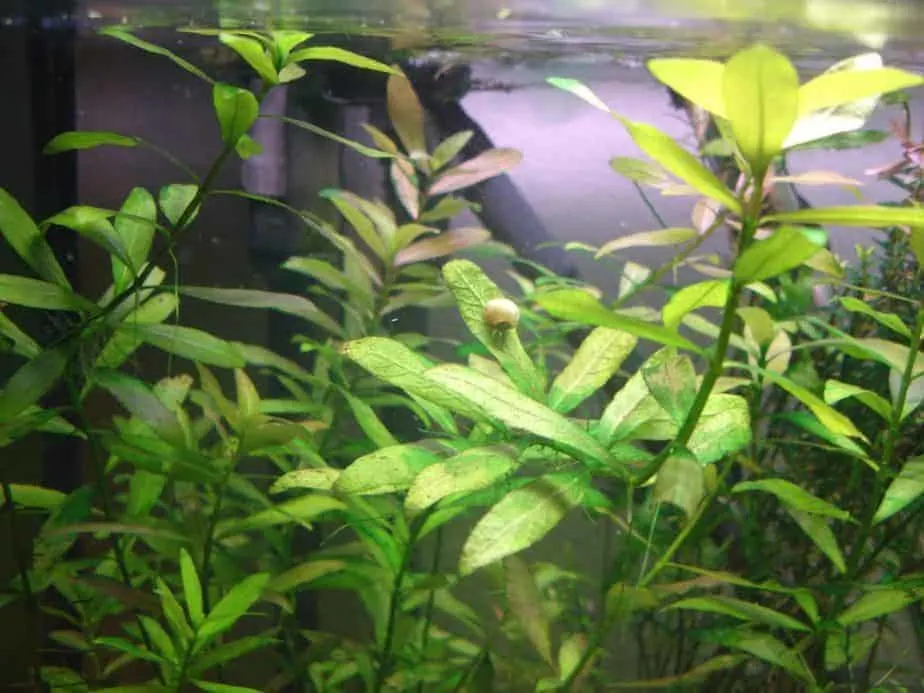
Another fast growing plant is Dwarf Hygro. I’ve grown this plant for a little over a year, and I can confirm it grows quickly in the right circumstances. However, it’s not one of my favourite plants and the stems of the plants don’t grow straight up. Instead, new plants sprout from the stems and it quickly grows into a dense bush.
It really deserves its place on this list, and if you’re going for a more wild, free-growing aquarium then give this plant a try. You will quickly see what I mean.
4. Hornwort
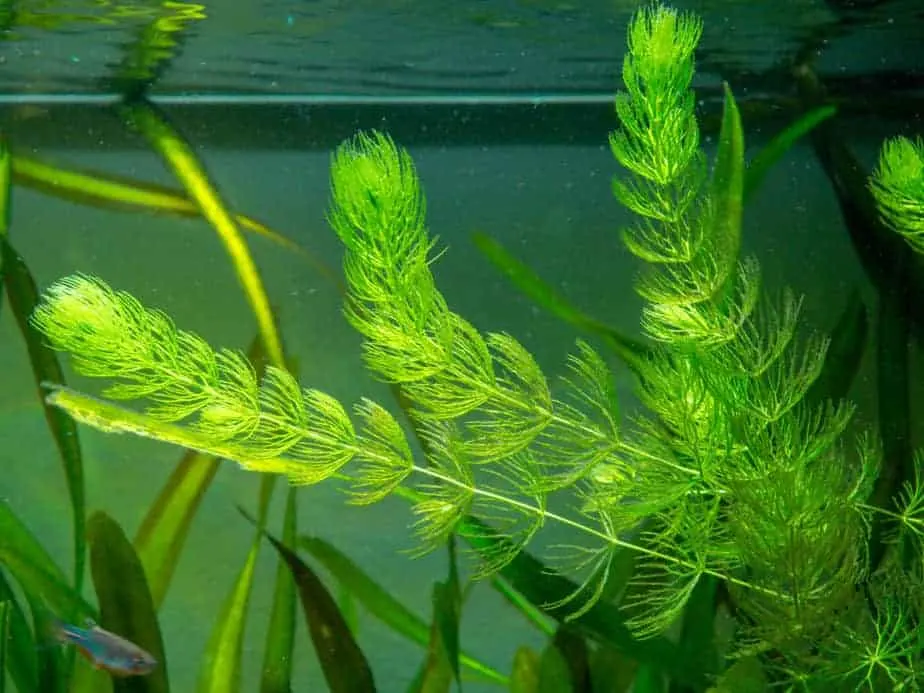
One of the most popular plants in the aquarium hobby: Hornwort. It’s beautiful detailed leaves make this stem-plant super beautiful. It’s a fast grower, and therefore needs to be on this list. Hornwort is also super beginner friendly, and can tolerate many aquarium parameters as long as it gets enough light and there are enough nutrition in the water.
In fact, this plant can grow in so many different water parameters that it has spread to all continents in the world except for Antarctica. That’s quite an impressive achievement, although it has the tendency to take over lakes by completely overgrowing all other plants.
This plant is not heavy on root-feeding which means that it can also float freely in the aquarium or grow in sand/gravel without fertilizers. I would recommend grabbing a couple of stems and pushing them down in your substrate, because the plant looks most beautiful this way.
Keeping your Hornwort alive is easy, just make sure there are enough fertilizers in the water. Here is what liquid fertilizer I use. To propagate, take some clippings and plant those in the substrate.
5. Water Wisteria
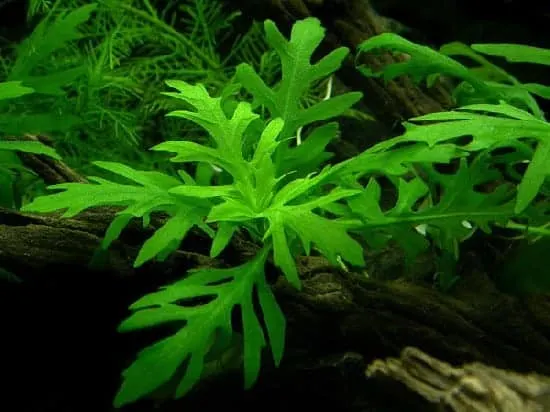
The next option is called Water Wisteria, which when planted can grow to be massive. It’s best suited for aquariums of at least 20 gallon (100L). I personally love the way this plant looks, so next time you hit the local fish store make sure to check this one out. The leaves of the plant remind me of a salad of some kind.
Overall, Water Wisteria is undemanding and hardy. It gives you little effort, as long as you make sure you provide enough fertilizer for it to grow. You don’t have to buy many stems when you are going to grow it, because it’s really easy to propagate Water Wisteria yourself. No need to spend too much money.
6. Rotala Rotundifolia
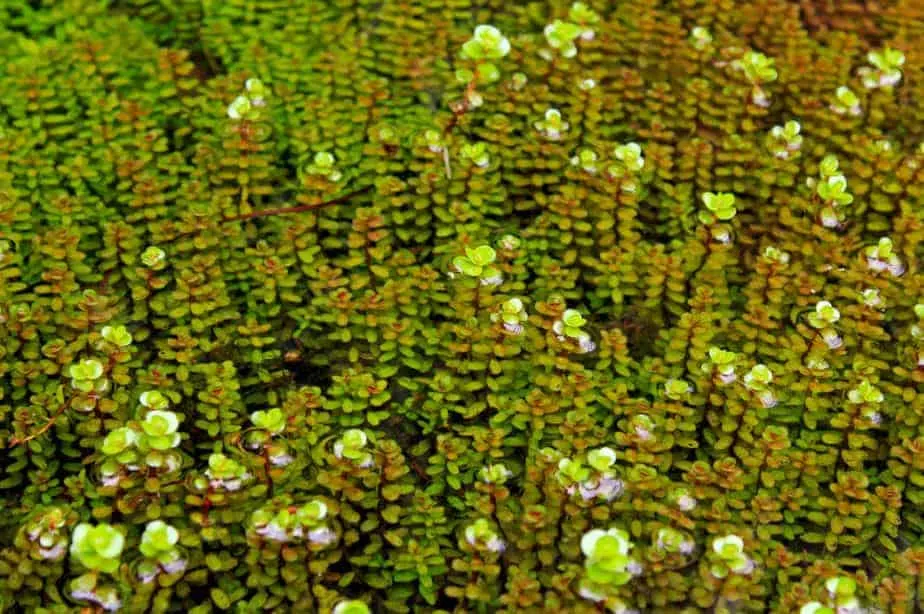
With enough iron, this plant can be a beautiful red eyecatcher in your planted aquarium, one with a very fast grow rate and beautiful round leaves. It’s often used by aquascapers around the world to add more color, depth and overall features to aquariums. Just like other stem-plants Rotala Rotundifolia (often also called Dwarf Rotala) is propagated by planting cuttings.
Here is a video that shows the plant better.
7. Amazon Sword (Echinodorus Bleheri)
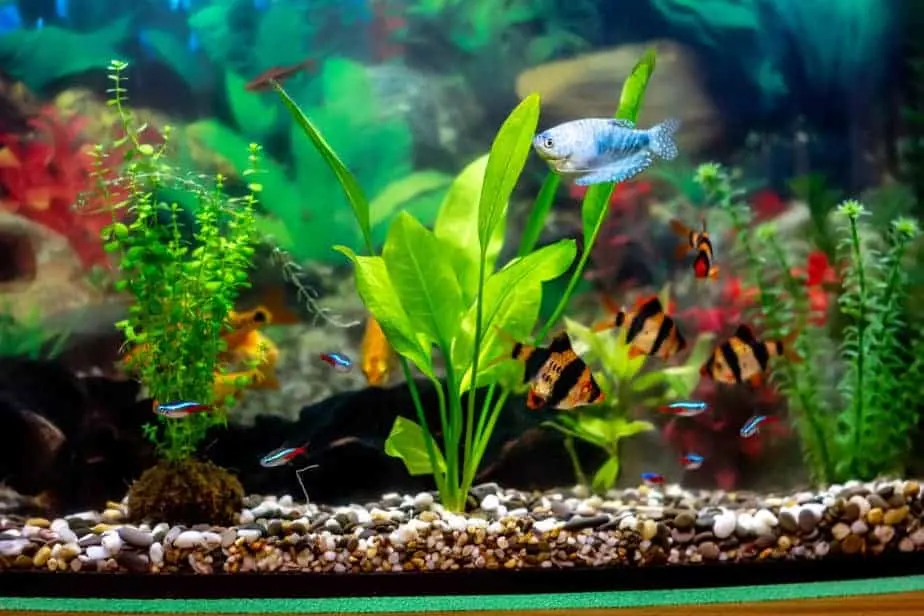
I genuinely hope you were not getting tired of all these stem-plants, because these bright green leaves are absolutely stunning. It’s just that they tend to grow really quickly. However, another plant that can not be absent from this list is the well-known Amazon Sword or “Echinodorus Bleheri”. It’s a plant that’s often used as a background plant in larger aquariums because they can reach to be pretty tall. Up to 20 inch/50 cm is not uncommon, and these fast growth rates are normal, especially when provided with a nutrient-rich substrate.
I’ve used it in the past to cover my filter intake and heater, which is a great application.
When you buy an Amazon Sword plant, it’s probably not that tall yet. I’ve actually bought two of them when I was buying plants for my very first aquarium. Well, within weeks the plant was too big for my tank and covering all my other plants from the light. I guess I should have done more research, but I can guarantee you this plant will grow fast in a beginner’s tank.
Unlike the other plants on this list, Amazon Swords are primarily root-feeders which means that you are going to need to add a couple of root tabs in the substrate where you are planting the plants. Thanks to its size, it makes for a good foreground plant.
8. Duckweed
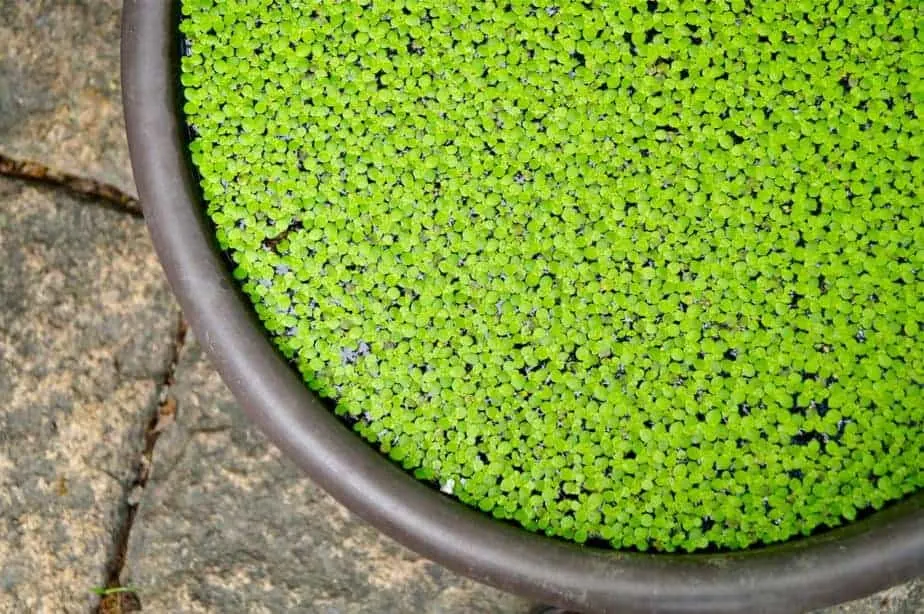
Beware: once duckweed is in your aquarium, it can be such a struggle to remove. It just keeps growing and you can not get rid of it completely without taking every single piece out of the tank. Duckweed is a great plant to keep in a goldfish aquarium as goldfish like to eat the duckweed and therefore keep the amount manageable.
I’ve been part of Facebook groups for many years and people keep asking how in the world they can get rid of Duckweed because they are fed up with it.
On the other side, it’s great at removing nitrates from the tank quickly and provides great shelter for your fish. If you’ve gouramis they will absolutely love the cover. Just make sure you don’t have a fast current at the surface, a filter output that’s heavily disturbing the water or an air bubbler.
9. Amazon Frogbit
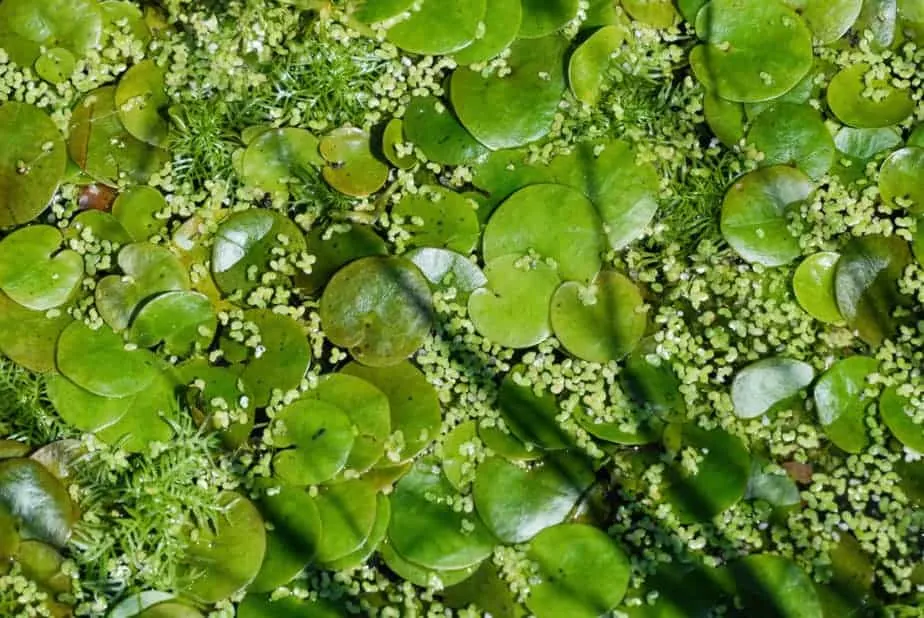
Another floating plant that’s a little bit less of an invasive-weed-kind-of-plant is Amazon Frogbit. I actually love the way this floating plant looks, and if I ever want to add a floating plant to one of my tanks it’s going to be this one.
The plant propagates easily without you having to do anything to help it. It takes a lot of nutrients from the water and if you’ve got too much I’m sure you can either sell it to your local fish store or give it away to other fish keepers to make them happy.
It’s important to keep the top of the leaves dry at all times, or else they can start rotting. Be careful when you are doing water changes, and make sure you carefully place the output of your filter to not disturb the water surface too much.
There is no need at all to add CO2 as it takes it from the air. However, if they’ve taken all the nutrients from the water it is important to keep adding a good quality liquid fertilizer or else all the new growth will die again. If you’re curious what liquid fertilizer I add, you can check it out here.
10. Ludwigia Repens
The final plant on the list is called Ludwigia Repens. It’s a fast growing beginner plant that is suitable for a medium to large aquarium. Because it grows fast and is easy to propagate, buying multiple stems in the beginning can be a mistake, especially if you do not have that much space available.
Once you put this plant in your aquarium, you will not have to take much care of it, except when you want to trim or move it. It needs medium lighting and propagates through cuttings. The red color is what makes this plant so attractive. Overall, it’s a great addition to your aquarium.
If you still aren’t happy with the plants mentioned so far, check out the Brazilian pennywort, hygrophila difformis, hydrocotyle leucocephala, dwarf sagitaria, brazilian waterweed, jaca moss, a micro sword, or anything else of the sort! Anything with a fast growth rate and a moderate light requirement should be just fine!
What Do Plants Need to Grow Faster?
All aquarium plants need light, fertilizer and CO2. If one of the three is lacking, it will grow slower or even stop growing. If all three are balanced you will get optimal growth. That’s why plants can die when you give them a lot of light but no fertilizer, or when there is not enough light or CO2.

If you do not want to add additional CO2, make sure to also lower the light and fertilizer so the plant triangle is balanced. If you want to know more about taking care of aquarium plants, I’ve written a killer article that contains all the information you will need. You can find it here: “The Clear Beginner Guide to Start With Aquarium Plants”.
My favorite fishtank products that make life easier
I am so happy you enjoy this post so far! You will also definitely like my product recommendations that will make your fishkeeping experience so much better. I’m 100% sure you’ll love them!
- Without a gravel vacuum, like one from Aqueon, cleaning the substrate of your tanks is near impossible. Whenever I want to remove some of the sunken detritus from the bottom of my acrylic tanks I’m happy I’ve got one of these.
- It’s no secret that I do not like nutritious aqua-soil. It makes a mess and only works for a given amount of time. Instead, I always use a liquid aquarium plant fertilizer. Everyone who keeps live plants needs it, it’s not that expensive and makes your plants grow better.
- I love keeping plants, but planting and reorganizing my aquarium was difficult until I got a set of these tools. It’s much easier to plant any kind of plant compared to using my thick fingers.
- Ever since I’m able to accurately test my water parameters, including the pH level, keeping fish became less stressful. Before I was always stressed that my water parameters were wrong, but with a kit such as the API Master kit, I can measure this. It really is essential to successful fishkeeping.
- The more you know about your aquarium, the better! Temperature is crucial for the health of your fish. A thermometer will also show you whether your heaters are still working correctly. It will give you more insight and more peace of mind. It’s an easy way to ensure that you’re providing your fish with the tropical temperatures they need.

